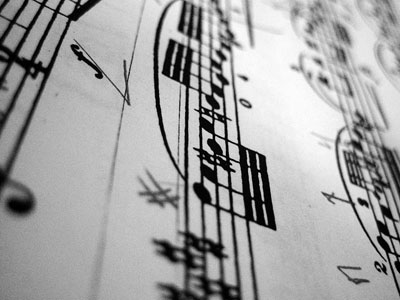All Nonfiction
- Bullying
- Books
- Academic
- Author Interviews
- Celebrity interviews
- College Articles
- College Essays
- Educator of the Year
- Heroes
- Interviews
- Memoir
- Personal Experience
- Sports
- Travel & Culture
All Opinions
- Bullying
- Current Events / Politics
- Discrimination
- Drugs / Alcohol / Smoking
- Entertainment / Celebrities
- Environment
- Love / Relationships
- Movies / Music / TV
- Pop Culture / Trends
- School / College
- Social Issues / Civics
- Spirituality / Religion
- Sports / Hobbies
All Hot Topics
- Bullying
- Community Service
- Environment
- Health
- Letters to the Editor
- Pride & Prejudice
- What Matters
- Back
Summer Guide
- Program Links
- Program Reviews
- Back
College Guide
- College Links
- College Reviews
- College Essays
- College Articles
- Back
Musician Dizzy Gillespie
After traveling for hours, riding the subway and walking several blocks, I had finally arrived, the Blue Note in New York City, the Jazz Capitol of the World. I entered the dimly lit room and made my way to my seat. I noticed the people and how they were dressed as if they were going to meet someone of royalty. As I was walking across the room, the lights began to dim further and a man came over the loud speaker saying, “Ladies and Gentlemen, please help me welcome the man who gave us the sound of Be-Bop, Mr. John Birks Gillespie!”
First, to completely understand Dizzy Gillespie, we have to understand a little bit about the man and how his life and his interest and music began.
Dizzy was born in Cheraw, North Carolina on October 21, 1917. (Gillespie.) He had eight other siblings and was the youngest of them all. He began playing his first instrument, the piano, at age four. He later received a scholarship to the Laurinburg Institute in North Carolina. (Gillespie.) One of Dizzy ‘s greatest contributions to Jazz was developing the “Be-Bop” sound with alto saxophonist Charlie Parker. This Be-Bop sound became the foundation foe many of Gillespie’s own arrangement in his own band. Together with Charlie Parker, Dizzy spent many years developing his Be-Bop sound.
In addition to Dizzy’s unique sound, he was also responsible for the foundation of modern Jazz. (B.Bopstein & John Birks.) He was prominent in many swing bands including those of Benny Carter, and Charlie Barnet as a trumpet player from 1937-1944. (A+E Networks.) He taught and influenced many great musicians such as: Miles Davis, Fats Navarve, Clifford Brown, Arturo Sandoval, Lee Morgan, Jon Faddis, and Chuck Mangione. (B. Bopstein & John Birks.)
Furthermore, not only was he responsible for the Be-Bop, he was also a key founder of Afro Cuban (Latin) Jazz. (B.Bopstein and John Birks.) When Dizzy began to establish himself as a great trumpet player, a man named Mario Bauza discovered him. This man was a member of the Cab Calloway Orchestra and helped Dizzy become a member in 1934. In fact, Bauza was later known as the “Musical Father” of Gillespie. (Gillespie.)
Later, Dizzy had his own band from 1946 to 1950 affording him scope as both soloist and showman. (A+E Networks.) Besides Dizzy’s many entertaining attributes, a unique part of his showmanship was playing a horn that had the bell bent to a 45-degree angle. Many people don’t realize that Dizzy’s first bell shaped horn was bent by accident. In 1953, someone actually sat on Dizzy’s horn and Dizzy discovered that the bell created better quality in the sound. (A+E Networks) After that, all of his horns were bent to a 45-degree angle on purpose. As a result of this experience, horns with the bell bent at a 45-degree angle are available commercially today.
As a result of many years of playing, Dizzy came to realize that if he inflated his cheeks to an extreme level, he could get prolonged sound from this horn. (Gillespie.) Many photographs of Dizzy today depict him playing his famous bent bell horn with enlarged cheeks.
In conclusion, I often wonder, as a horn player, what it would have been like to have known Mr. Gillespie. I would thank him for his contributions to Jazz and would let him know what an inspiration he has been to me as a trumpet player.
"In the naturally effervescent Mr. Gillespie, opposites existed. His playing -- and he performed constantly until nearly the end of his life -- was meteoric, full of virtuosic inventions and deadly serious. But with his endlessly funny asides, his huge variety of facial expressions and his natural comic gifts, he was as much a pure entertainer as an accomplished artist. In some ways, he seemed to sum up all the possibilities of American popular Art". - Watrous, Peter. "Dizzy Gillespie, Who Sounded Some of Modern Jazz's Earliest Notes, Dies at 75", New York Times, January 7, 1993.

Similar Articles
JOIN THE DISCUSSION
This article has 0 comments.
